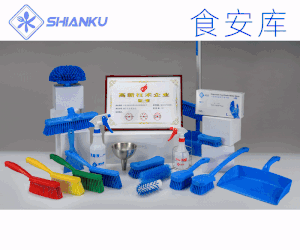食品伙伴網(wǎng)導(dǎo)讀:2010年3月17日,歐盟公布雞感染彎曲桿菌和沙門氏菌調(diào)查結(jié)果。
原文報(bào)道:
The European Food Safety Authority (EFSA) has published the results of a survey on Campylobacter and Salmonella in chicken at slaughterhouses in the European Union. In most EU Member States, a high prevalence of Campylobacter was found in chickens, whereas Salmonella was less frequently detected. These zoonoses are the cause of the two most reported food-borne diseases in humans in the EU: campylobacteriosis and salmonellosis. This was EFSA’s sixth baseline survey on food-borne bacteria carried out at EU level and the first to directly investigate the presence of Campylobacter and Salmonella in chickens at slaughter.
All Member States[1] participating in the survey carried out in 2008 reported Campylobacter in the chickens they sampled. The samples were taken at the beginning and at the end of the slaughter line, that is respectively when the chickens arrive at the slaughterhouse and when their carcasses are chilled after slaughtering. On average, the bacterium was found in the intestines of 71% of chickens, indicating that they were already infected when alive, and on 76% of sampled carcasses, which suggests some further contamination during slaughtering. The survey shows that these figures varied greatly between Member States. The survey follows a recent opinion of EFSA’s Biological Hazards (BIOHAZ) Panel which confirmed that poultry meat appears to be a major, if not the largest, source of campylobacter infection in humans[2].
The survey also says that 22 Member States reported Salmonella in the chicken carcasses they sampled. On average, 15.7% of sampled carcasses were found to be contaminated, although figures varied between Member States. Of the various types of Salmonella, 17 Member States reported the types Enteritidis and Typhimurium, which are responsible for most Salmonella infections in humans.
The aim of the survey was to provide comparable figures for all participating Member States in order to give an overview of the prevalence at slaughter of Campylobacter in chickens and of Campylobacter and Salmonella in chicken carcasses[3]. The survey also sets out recommendations, in particular for further research on factors affecting the spread of Campylobacter in chicken meat production and on best methods for surveillance and control of Campylobacter[4].
- Analysis of the baseline survey on the prevalence of Campylobacter in broiler batches and of Campylobacter and Salmonella on broiler carcasses in the EU, 2008
Notes to editors
In the European Union, campylobacteriosis and salmonellosis are the two most frequently reported food-borne illnesses in humans. Chicken meat is considered to be an important food-borne source of both these human diseases. The risk for human health arises from consumption of under-cooked meat or cross-contamination between foods. Safe handling of raw meat, thorough cooking and kitchen hygiene can prevent or reduce the risk posed by Campylobacter and Salmonella contaminated chicken meat.
The data in the survey were collected from slaughtered chickens and their carcasses randomly selected from slaughterhouses within each participating country. The sampling took place throughout 2008; a total of 10,132 samples were tested from 561 slaughterhouses in 26 EU Member States and Norway and Switzerland.
EFSA’s scientific work supports European risk managers in setting policies and making decisions regarding the reduction of zoonoses in the EU. EFSA’s BIOHAZ Panel carries out risk assessments on biological hazards in relation to food safety, including food-borne diseases. The Panel evaluates the risks posed by a given issue and provides advice on possible control options. EFSA’s Zoonoses Data Collection Unit monitors and analyses data on zoonotic bacteria and parasites across the EU and co-ordinates baseline survey reports on food-borne zoonotic agents found in foods and in animals. These baseline surveys are used by risk assessors such as the BIOHAZ panel to provide risk estimates and also by risk managers to help set reduction targets.
EFSA’s recent publications include:
- EFSA’s BIOHAZ Panel opinion on the risk posed by broiler meat to human campylobacteriosis in the EU
- EFSA’s Zoonoses Data Collection Unit “Community Summary Report on trends and sources of zoonoses, zoonotic agents and food-borne outbreaks in the European Union in 2008”
For media enquiries, please contact:
Ian Palombi, Press Officer
Steve Pagani, Head of Press Office
Tel: +39 0521 036 149
Email: Press@efsa.europa.eu
[1] 26 Member States and Norway and Switzerland participated in the survey.
[2] In its “Scientific Opinion on Quantification of the risk posed by broiler meat to human campylobacteriosis in the EU” EFSA’s BIOHAZ Panel concluded that the handling, preparation and consumption of broiler meat may directly account for 20 to 30% of human cases of campylobacteriosis in the EU.
[3] The present survey only takes into consideration the occurrence of Salmonella in chicken carcasses samples. EFSA has already carried out a survey on Salmonella in live chicken flocks .
[4] Control measures for Salmonella are already in place in the EU. Member States follow a compulsory Salmonella control programme for chickens and Salmonella criteria are also set for chicken meat and other types of meat. More information on the EU reduction programmes for Salmonella .
原文報(bào)道:http://www.efsa.europa.eu/en/press/news/zoonoses100317.htm
相關(guān)政策解讀











 地區(qū):
地區(qū):






 魯公網(wǎng)安備 37060202000128號(hào)
魯公網(wǎng)安備 37060202000128號(hào)



